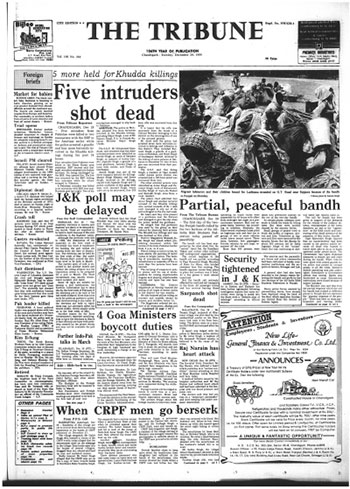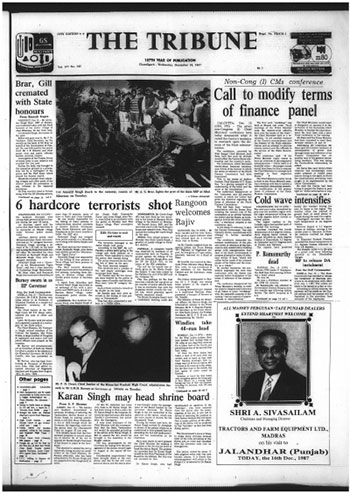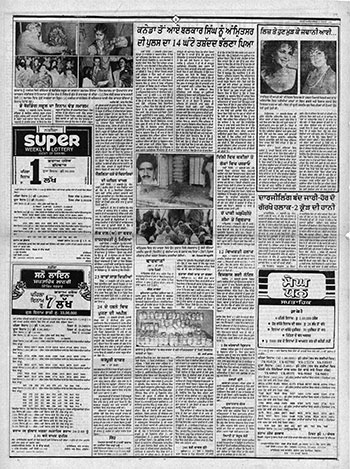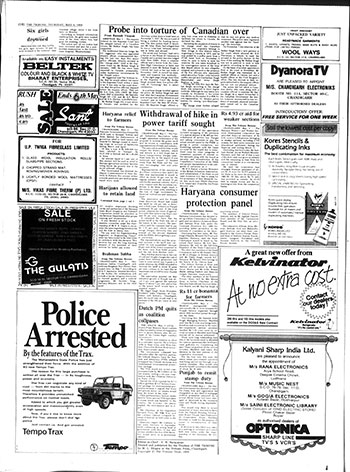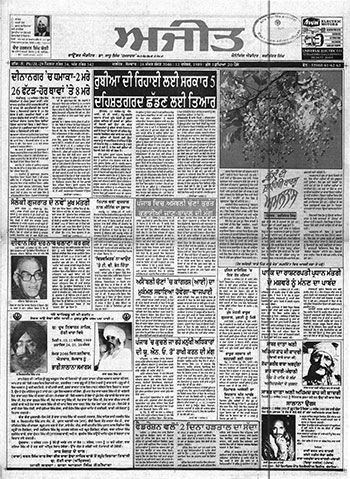Mohd. Izhar Alam
At least Enforced Disappearances/Extrajudicial Executions
The dossier of Mohammad Izhar Alam visualizes cases of enforced disappearances and extrajudicial executions reportedly committed under his command during his tenure as Senior Superintendent of Police (SSP) or Deputy Inspector General (DIG) in various jurisdictions of Punjab. He not only permitted his subordinates and other security forces to perpetrate violations against residents in his assigned jurisdictions, but he also allowed them to travel extraterritorially to target individuals. Further, during the counterinsurgency, human rights groups regularly reported on the Alam Sena, a paramilitary group organized and run by Alam and notorious for human rights violations.
The number of cases presented here is an undercounting of the likely cases perpetrated under his command. These cases draw from Ensaaf’s interviews with family members of the victims and other witnesses, and present the information provided by them. This visualization excludes all cases where complete incident dates or locations were not available. Without this information, it is difficult to ascertain whether those incidents occurred under Alam’s command. This data also excludes cases of individuals who were arbitrarily detained or tortured by Alam or officials under his command.
We will update the cases of enforced disappearances and extrajudicial executions reported under his command, as we receive more information. To a large extent, however, this information and the complete truth rests with the government of India.
Command History
Unless otherwise noted, Mohammad Izhar Alam’s command history draws from the following sources: (1) the annual Civil List of the Indian Police Service (IPS) for the Punjab cadre, prepared by the Ministry of Home Affairs, naming the position and date of posting of the senior police official as of January 1 of that year for 1983 to 1996, (2) news reports from the Punjabi daily newspaper Ajit and the English daily Tribune (Chandigarh), and (3) the individual websites of Punjab’s police districts, listing the names of Senior Superintendents of Police (SSP) and their dates of tenure. This information draws from publicly available records/sources; the complete account of Alam’s official postings and activities lies with the government of India.
-
SSP Ropar, October 31, 1983 - November 14, 1985
-
SSP Jalandhar, November 15, 1985 - June 30, 1986
-
SSP Amritsar, July 1, 1986 - April 19, 1988
(The IPS List from 1987 and the Amritsar police website vary by one week on both the starting and ending dates. The dates provided by the Amritsar police are used here.)
-
Padma Shri awarded by Government of India in August 1987
-
SSP Jalandhar, April 27, 1988 - most likely May 21, 1989
-
Most likely DIG, Border Range, May 27, 1989 - November 14,1989
(On May 21, 1989, the Tribune reported that Alam took over as DIG Jalandhar Range on May 21, 1989, but then subsequent articles stated he was DIG Border Range as of May 27. See, e.g., May 27, 1989, p. 8, “Areas Changed”. Because this posting falls in the middle of the year, it is not reported in the IPS Civil List. Further, the Punjab Police website does not provide information regarding its historical postings of DIG.)
Personal Participation
-
cases directly implicating Mohd. Izhar Alam in abduction, disappearance, and/or killing
Known Promotions
The government of India consistently promoted Mohd. Izhar Alam throughout his career to the highest ranks of Punjab Police, including Additional Director General of Police (ADGP). It also rewarded Alam in 1987 with the Padma Shri civilian award. He retired from the police service in 2009. Alam died in 2021, escaping accountability for human rights violations committed by him and under his command.
-
DIG/Punjab Armed Police, Jalandhar Cantt., November 15, 1989
-
DIG, Central Reserve Police Force (CRPF), April 22, 1990 - at least 1994 (reported in IPS Civil Lists)
-
Inspector General of Police (IG), Commando, BNS Patiala, December 21, 1995 (according to 1996 IPS List)
-
IG (Prisons), position held as of March 6, 2002, as reported in Times of India
- ADGP (Prisons), promoted April 26, 2002, according to the Tribune
Legal Cases / Select News Articles
Other Reports
-
Cable, US Embassy in New Delhi, December 19, 2005, shared on Wikileaks: “During the insurgency, he [Alam] assembled a large, personal paramilitary force of approximately 150 men known as the ‘Black Cats’ or ‘Alam Sena’ (‘Alam’s Army’) that included cashiered police officers and rehabilitated Sikh terrorists. The group had reach throughout the Punjab and is alleged to have had carte blanche in carrying out possibly thousands of staged ‘encounter killings.’”
-
Cable, US Embassy in New Delhi, July 3, 2006, shared on Wikileaks, mentioning Alam Sena.
- Tribune, February 28, 1988, p.5, “Police, terrorism and justice.”
Key Statistics of cases directly implicating Mohd. Izhar Alam:
Marital status
If married, did the victim have children?
Total children surviving victims: 17
Religion
Caste
Age
Education
Employment
Urban / Rural
Abduction, Detention, & Torture
Prior detentions
Prior torture
Abduction preceding enforced disappearance/extrajudicial execution
Security officials informed witnesses where they were taking the victim
Witnesses to abduction
Victim abduction location
Detention facility type
Data forthcoming
Preceding detention location known
Witnesses to detention preceding enforced disappearance/extrajudicial execution
Data forthcoming
Security official response to victim status
Victim presented before judge/magistrate
Enforced Disappearances vs. Extrajudicial Executions
Classification
Number of victims per family
Related incidents
Body disposal by security forces
Security forces returned body
Condition of corpse, if known
Names of involved security officials known
Security forces uniformed
Type(s) of security forces involved in abduction
Type(s) of security forces involved in extrajudicial execution
Militant status
Non-militant, provided support to militants
If provided support, support was voluntary
Approached court or commission
Approached security officials
Reason the family did not pursue any kind of action
Remedies desired from government
District
Year
